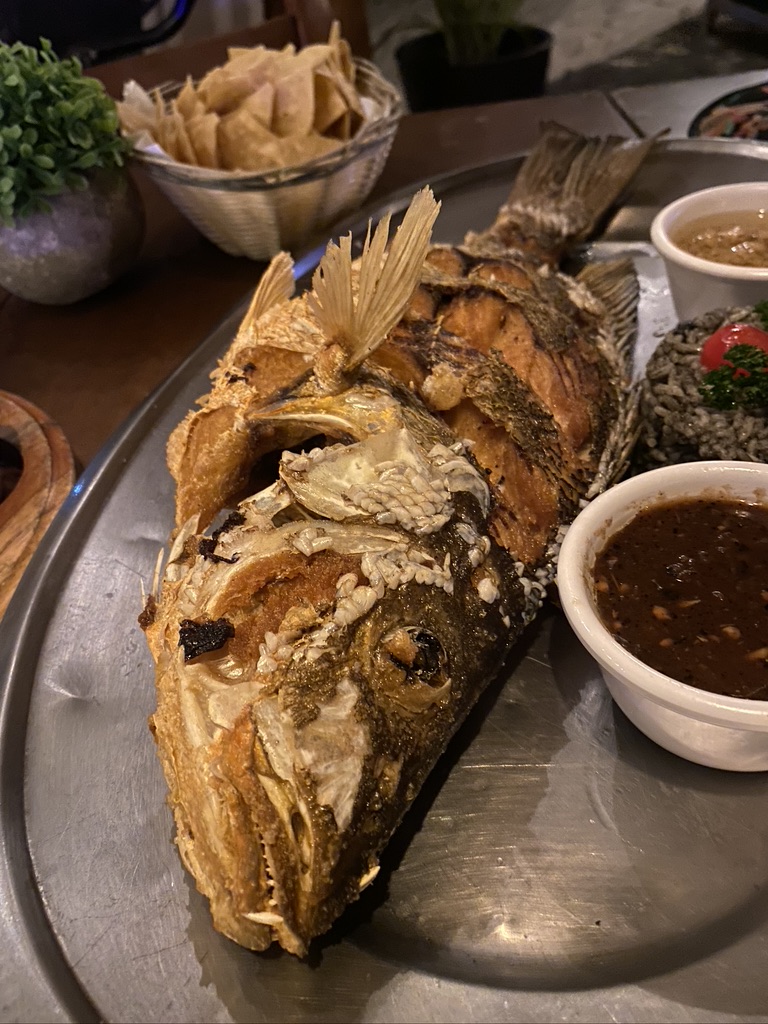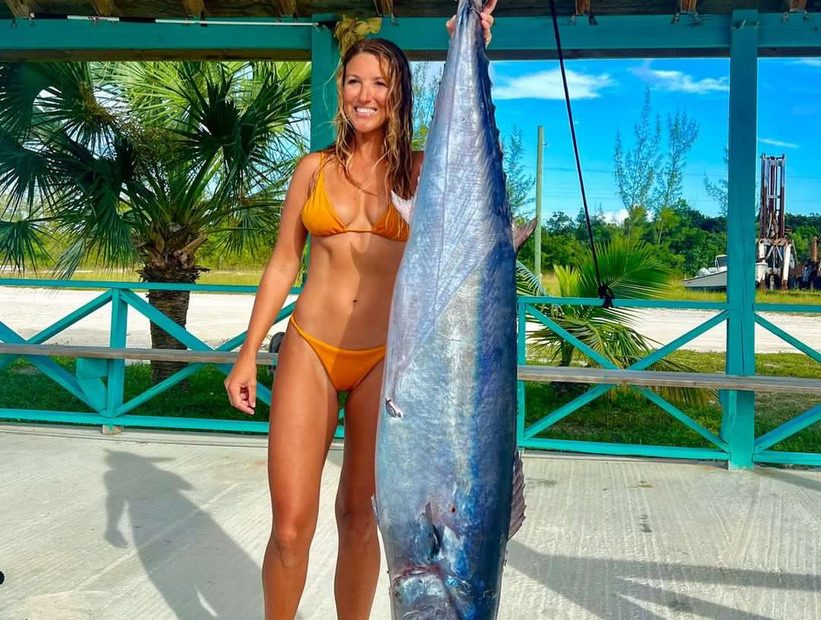The 26′ panga idled through a lagoon on the lee side of Isla Mujeres, a narrow island near Cancun, Mexico. She was narrow, with a beam of maybe six feet, and the hull was as much held together by the layers of paint as anything else. The captain’s face was covered in a buff and sunglasses and the cover of the 75 hp Yamaha lay on the deck at his feet next to a five-foot section of rope he used to start the engine. Two clear five-gallon fuel jugs also lay on the deck, one with a hose connected to the outboard. Not a life jacket in sight.
Saltwater spray broke over the bow as we rounded the mangroves at the edge of the harbor while frigate birds circled slowly overhead. My guide, Diego, explained the safety precautions we’d be taking for the dives today. His English was great and his accent thick as he explained how to handle the speargun, the fish, sharks, and trying not to blackout and drown. I listened intently and nodded as he went.
Now the Yamaha revved up and we started plowing through the waves into a sandy area of about 25′ of depth where the hull of a wrecked sailboat lay. This is what Diego would call “shallow” and it was still deeper than I’d ever dove before. I started spearfishing about twenty years ago with a pole spear I made in high school shop class. However, I’d never gotten any instruction or been guided and my total experience puts me well below what I’d consider a novice.
Once we found the wreck, I pulled on my fins, placed my mask over my face, and put the snorkel in my mouth. Diego said, “are you ready, sir?” I garbled a “yes” through the snorkel and stepped into the Caribbean. I came back to the surface, pressed the mask tighter against my face, and looked down into a pack of barracuda, some of which were over five feet long. I started to inhale for six seconds and then exhaled for twelve in what’s referred to as a “breathe up.”
Divers don’t remain underwater with the oxygen in their lungs so much as the oxygen in their blood. By using breathing exercises, a diver can hyper-oxygenate their blood without hyperventilating. A 60-second dive might take three minutes to breathe up. As the current pulled us closer to the wreck I spotted three barracuda and a snapper near the bottom. I took one last breath, shoved my speargun straight down, and followed it with my body. At around ten feet my ears started hurting from the pressure and I squeezed my nose through the mask and breathed into my sinuses to make my ears pop. One of the barracuda turned and started swimming towards me then opened his mouth full of pretty intimidating teeth. The closest thing I’ve ever done to this is spearing carp in rivers in the pacific northwest in five feet of water. The game had just changed.
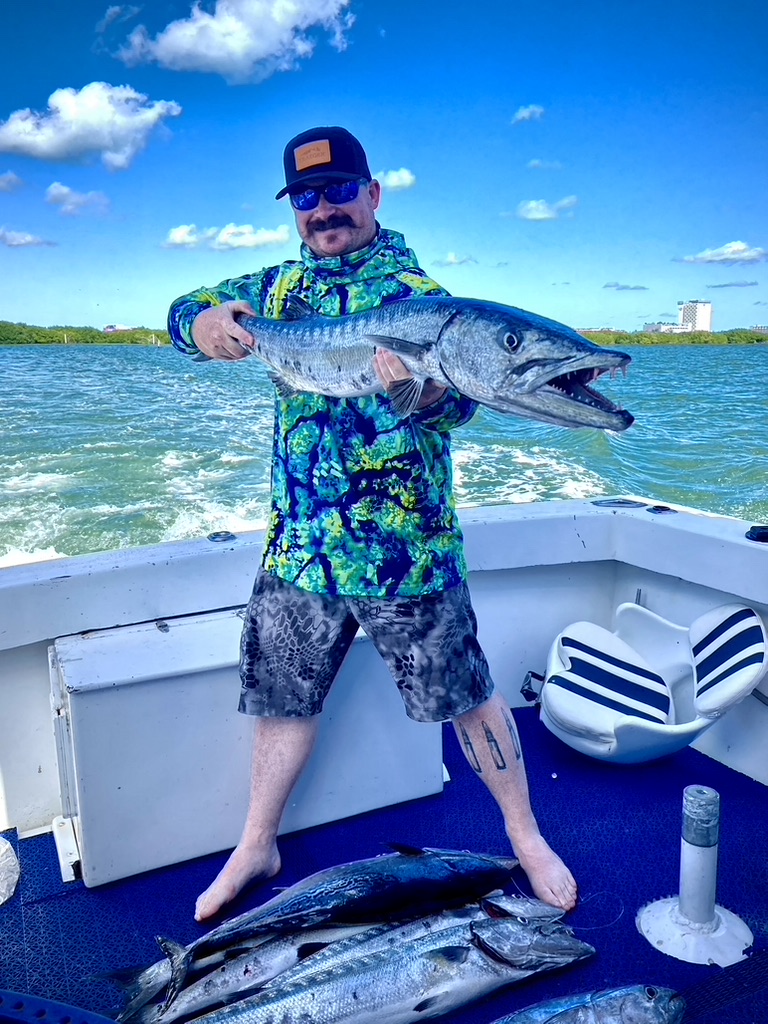
The Rundown
Spearfishing is a unique and ancient form of fishing that has evolved over time. From early man’s use of sharpened sticks to catch fish to the modern-day use of spearguns and other specialized equipment, the sport of spearfishing has come a long way. It is a challenging and rewarding activity that requires a combination of physical and mental skills.
In this article, we will delve into the history of spearfishing, the challenges it presents, the gear required to participate, and some safety information for those who are interested in trying it. We will also explore the parallels between spearfishing and big game hunting.
The History
The history of spearfishing is a long one, dating back to the earliest days of human civilization. Early man used sharpened sticks to catch fish and other aquatic animals, and over time, these sticks evolved into more advanced forms of fishing equipment. The first harpoons were used in ancient Greece and Rome. With the invention of the speargun in the early 20th century, spearfishing underwent a significant transformation. Today, spearfishers use a variety of specialized equipment, including spearguns, pole spears, wetsuits, fins, and snorkeling gear to catch fish.
The Challenges
Spearfishing presents a number of physical and mental challenges. One of the most challenging aspects of the sport is free diving. This is the practice of diving underwater without the use of a breathing apparatus. Free divers must hold their breath for extended periods of time and have strong lung capacity. The good news, for some of us, is that your ability to hold your breath has much less to do with your physical fitness or cardio than it does your ability to follow a “breathe up” procedure.
Stalking fish is also challenging as it requires a great deal of stealth and patience. It is important to be aware of the fish’s habits, so the spearfisherman can approach the fish slowly and quietly, without alarming it. A top-down approach is fundamental, but a good broadside shot to the spine right behind the gills is preferred on most fish. This results in an instant kill and prevents a fish from swimming erratically with a spear in it, which tends to attract sharks. Spearfishers call this shot a “stone.”
Advanced “spearos” employ all kinds of tricks to call fish in, from chumming (scary) to scratching the reef with their fingers, making grunting sounds, jigging flashers in the water, and doing a little spirit finger dance with their off-hand to mimic a squid. Each fish has its own weaknesses, and a spearo has to learn and exploit them. Swimming to the bottom and laying quietly while fish come to investigate your presence is a great move if you can conquer your mind’s desire to swim to the surface and dispel the accumulating carbon dioxide in your lungs. You’ll notice that it isn’t the first breath in that brings relief, but rather the first breath out.
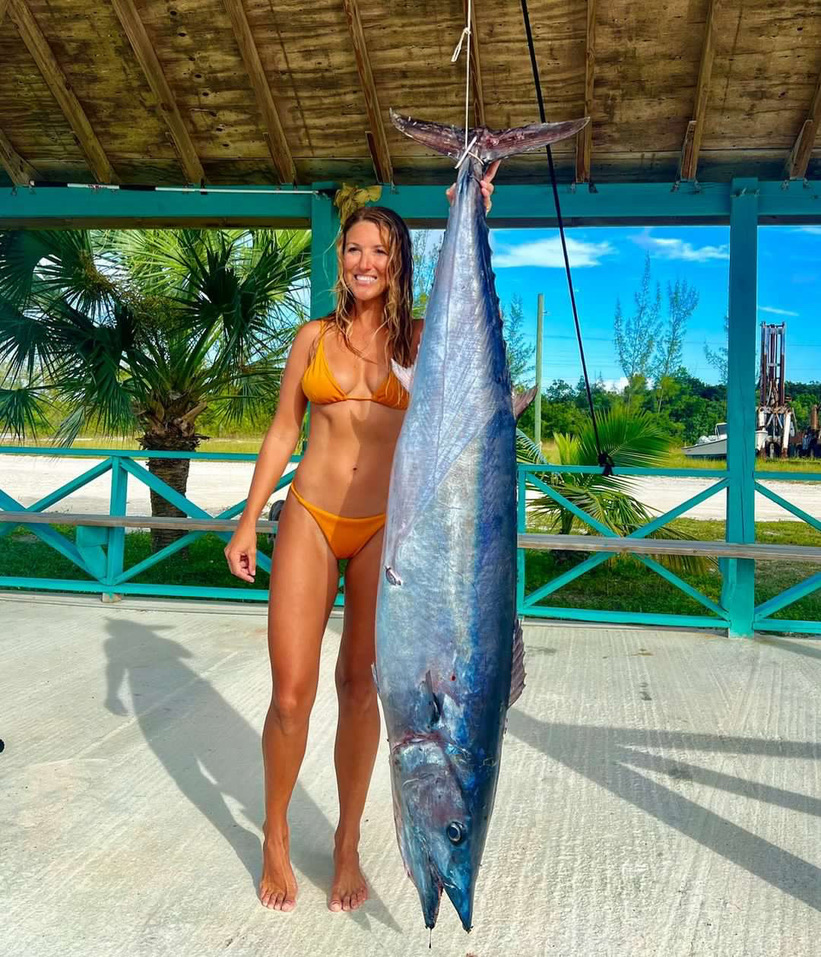
Safety
Safety is an important consideration in spearfishing. The risks associated with spearfishing include drowning, getting lost at sea, and getting injured by the equipment. Normal weapon safety rules apply. Keep your speargun pointed in a safe direction with the safety on until you are ready to fire.
It is advisable to have proper training before attempting spearfishing, so finding a free dive school or spearfishing school is a good idea. Diving with a partner and using a float or safety line is also recommended. If you are new to spearfishing, it is important to start with a small, easy-to-catch fish and work your way up to a larger, more challenging species.
While most of us think of the Bahamas, Florida, Hawaii, or other tropical saltwater as the places to spearfish, much opportunity is to be had anywhere you can find clear water and a non-game species in freshwater, depending on your state’s regulations. I have had some great times spearing carp and suckers in western rivers. I am currently pressuring the state of Oregon to allow spearfishing for invasive smallmouth bass in rivers which currently have no bag limits.
A basic gear list includes fins, a mask and snorkel, a wetsuit, a speargun or pole spear, a float, a dive knife, and a weight belt. On this hunt in the Caribbean, I didn’t wear a wetsuit because the water was 83 degrees, and only needed four lbs of lead on my weight belt to offset my buoyancy in the salt water.
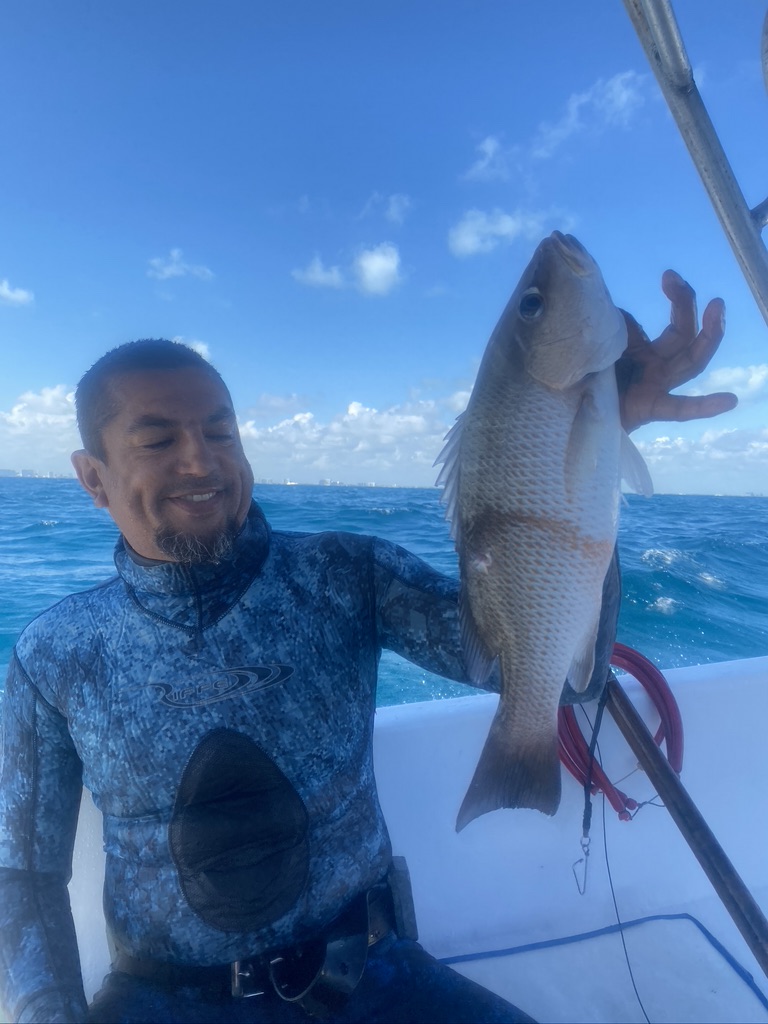
The Parallels
There are many parallels between spearfishing and big game hunting. Both activities require stealth, patience, and a good understanding of the animal being hunted. In both cases, the hunter must be aware of the animal’s habits and movements in order to stalk and shoot it. You’ll hunt terrain and food sources in the water in many similar ways as you would on land. You can attempt to call fish in, ambush them, or spot and stalk. The biggest difference is that when you are spearfishing, your hunting season only lasts as long as you can hold your breath.
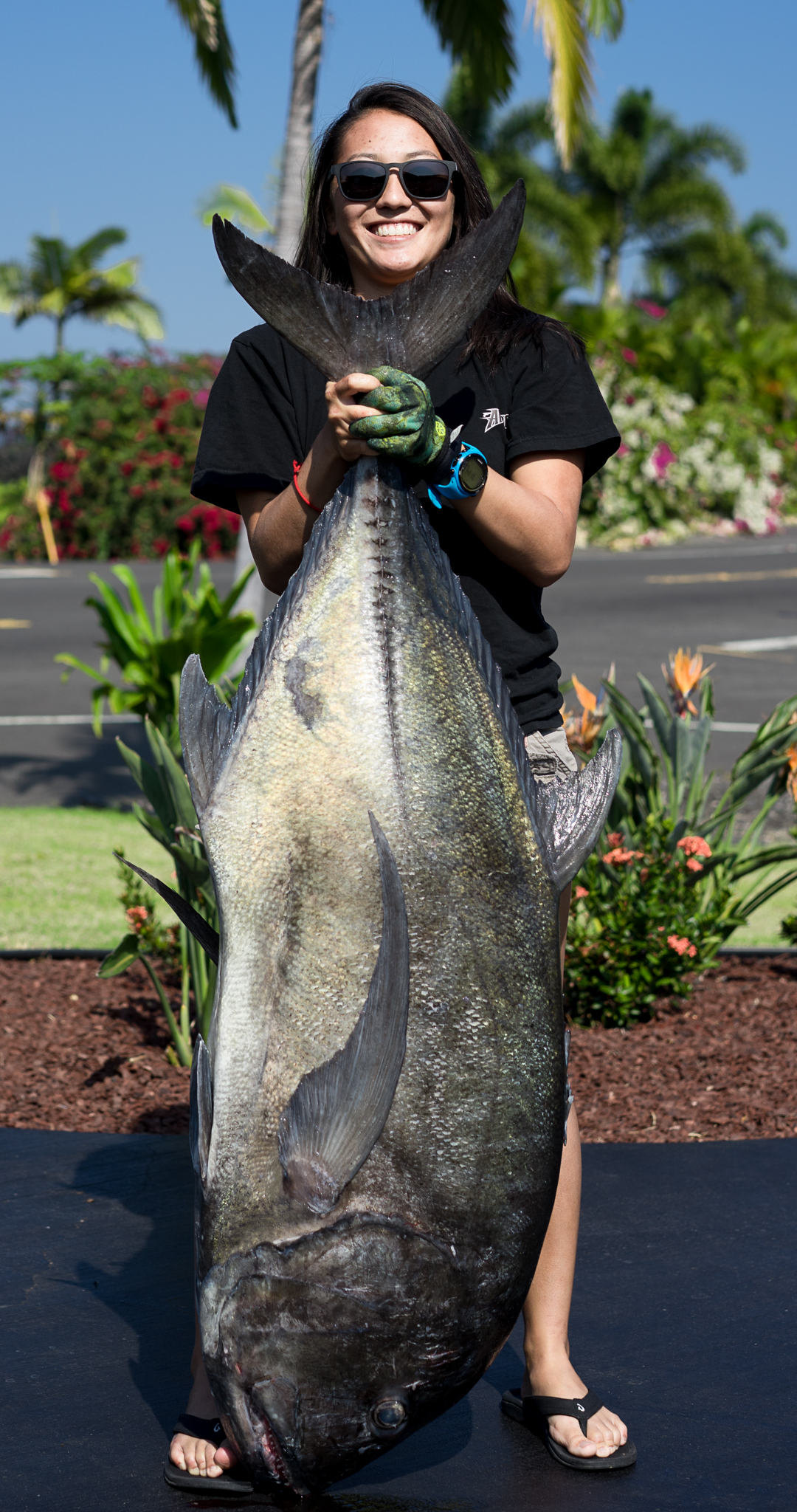
Conclusion
I’d love to tell you that I extended my speargun, looked down the shaft, and squeezed the trigger, sending a 140cm 7.5mm steel shaft into the mouth of that barracuda, but I didn’t. I gulped, choked, and swam to the surface like I’d just been nose-to-nose with an underwater grizzly bear.
But then I did another breathe up, dove again, got down to about 20 feet, and as the barracuda turned broadside I shot and missed. So I swam up to Diego who handed me another loaded speargun and tried again, and again, and again. I found it difficult to tell how far away the fish were in the clear Caribbean water. My max range was around 10′ with this 100cm Riffe double band gun.
Towards the end of the day, I finally was able to make it to the bottom and swam into a hole in the reef and speared a mangrove snapper. That evening I took it to a restaurant on the island in a plastic bag and the chef came to the table, grinned and complimented the snapper, then took it to the kitchen where he fried it whole. I watched the sunset and ate my fish. I don’t remember anything in my life that felt more satisfying.
